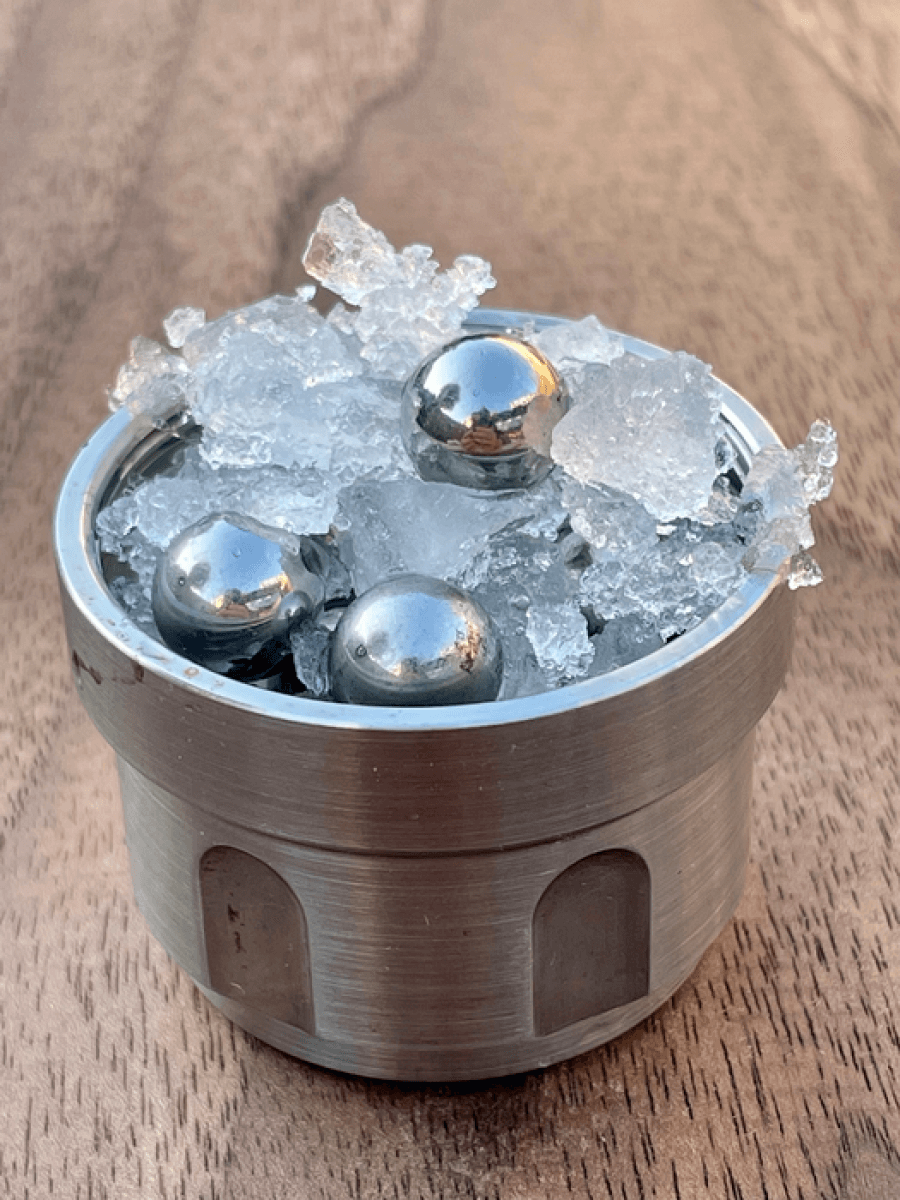LONDON — Is ice the same throughout the galaxy? Apparently not — and the discovery of a new type of ice could hold the key to finding alien life. Scientists from University College London and the University of Cambridge say this new ice resembles liquid water more than any other form. The substance contains “amorphous” disorganized molecules, unlike crystalline ice which humans are more familiar with. The team believes this ice may exist inside frozen moons in the outer solar system.
“Water is the foundation of all life. Our existence depends on it, we launch space missions searching for it, yet from a scientific point of view it is poorly understood,” says senior author Professor Christoph Salzmann of UCL Chemistry in a media release.
“We know of 20 crystalline forms of ice, but only two main types of amorphous ice have previously been discovered, known as high-density and low-density amorphous ices. There is a huge density gap between them and the accepted wisdom has been that no ice exists within that density gap.”
In experiments, the team used a process called ball milling — vigorously shaking ordinary ice together with steel balls in a jar cooled to -200 degrees Centigrade. Rather than ending up with small bits of ordinary ice, the process created a novel amorphous form of ice.
“We have shown it is possible to create what looks like a stop-motion kind of water. This is an unexpected and quite amazing finding,” says co-author Professor Andrea Sella, also from UCL Chemistry.
Unlike other forms of ice, it had the same density as liquid water. The team is calling it medium-density amorphous (MDA) ice.
“Our study shows that the density of MDA is precisely within this density gap and this finding may have far-reaching consequences for our understanding of liquid water and its many anomalies,” adds Prof. Salzmann.

Our neighboring planets may be making this ice all the time
Tidal forces from gas giants such as Jupiter and Saturn may exert similar shearing forces on ordinary ice as those created by ball milling. When the team warmed up MDA ice and recrystallized it, the ice released an extraordinary amount of heat. It could trigger tectonic motions and “icequakes” in the extremely thick icy covering on Ganymede — Jupiter’s largest moon.
This satellite is bigger than the planet Mercury and only slightly smaller than Mars. It may host more water than all of Earth’s oceans — about 100 miles below its crust. Scientist also believe that single-celled microbial lifeforms called extremophiles could exist there.
The density gap has led scientists to suggest water becomes two liquids at very cold temperatures. Theoretically, at a certain temperature, both could co-exist, with one floating above the other — similar to mixing oil and water. However, scientists have only been able to demonstrate this in computer simulations.
The study in the journal Science raises questions about the validity of this idea.
“Existing models of water should be re-tested.
How do you make this ice in a lab?
Amorphous ice, although rare on Earth, is the main type found in space, researchers say. It has insufficient thermal energy to form crystals in the colder environment. The newly discovered ice may be the true glassy state of liquid water — a precise replica — in the same way window glass is the solid form of liquid silicon dioxide. On the other hand, MDA may not be glassy at all, but a heavily sheared crystalline.
“We shook the ice like crazy for a long time and destroyed the crystal structure. Rather than ending up with smaller pieces of ice, we realized that we had come up with an entirely new kind of thing, with some remarkable properties,” explains lead author Dr. Alexander Rosu-Finsen, who carried out the experimental work while at UCL Chemistry.
Water has many anomalies that have long baffled scientists. For instance, optimum density occurs at four degrees Centigrade, reducing as it freezes. This is why it floats. Also, the more you squeeze liquid water, the easier it gets to compress, deviating from principles true for most other substances.
Amorphous ice was first discovered in its low-density form in the 1930s. Scientists condensed water vapor on a metal surface cooled to -110 degrees Centigrade. Its high-density state was discovered half a century later when ordinary ice was compressed at nearly -200 degrees Centigrade.
While common in space, on Earth, amorphous ice is thought only to occur in the cold upper reaches of the atmosphere. Ball milling is a technique used in several industries to grind or blend materials, but it had not been applied to ice before.
In the study, scientists cooled liquid nitrogen to cool a grinding jar to -200 degrees Centigrade. Scanning techniques identified the structure and properties of MDA. The researchers found if they compressed it and then warmed it up, it released a surprisingly large amount of energy as it recrystallized. Their study shows water can be a high-energy geophysical material that may drive tectonic motions in the ice moons of the solar system.
South West News Service writer Mark Waghorn contributed to this report.

Source link
